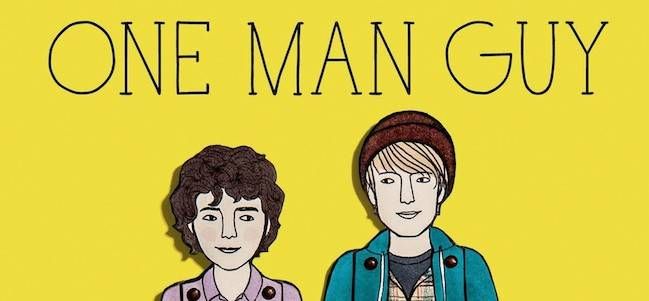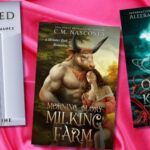
Highlights in Gay YA: Interracial Romance and Racial Diversity
When I reach into the YA QUILTBAG, I’m not usually looking for the hard stuff. Coming to terms with your reality while also living on the streets or dealing with an awful family or drowning your sorrows in drugs and prostitution can be for a different reader.
I’m just looking for gooey fluffiness.
To be fair, sometimes that gooey fluffiness is couched in coming to terms with your reality while also living on the streets or dealing with an awful family or drowning your sorrows in drugs and prostitution.
But really, I’m usually in search of a cute romance, whether it involves self-realization, coming out, or I’ve-been-out-since-I-was-eight-deal-with-it. Blame David Levithan and too much fanfiction. And it’s been in some of those jewels–which can involve their own amount and level of hardship–where I’ve found some of the most diversely rich characters.
To be fair, when I say “diversity,” I don’t mean “written for an insulated culture that is not white.” I don’t look at Street Lit and think “that’s racially diverse!” because an all-black or all-Latino book is not racially diverse. And I don’t think I’ve ever seen a Token White Person in one of those. I am looking for what is more a representation of the community I’m familiar with, and that’s one in which people of many races mix together relatively seamlessly. A metropolitan Utopia, as it were.
Take Michael Barakiva’s One Man Guy. Not only do we get to see the self-realization and -actualization of a young teen who finds himself with a crush on a guy, who stands by his principles even in the face of his loving but overbearing family, and who finds himself in summer school for the smartest dumb reason, but we get to discover the rich traditions, histories, prejudices, and even the delicious foods of an Armenian-American family. Written by an Armenian/Israeli, the story rings clearer than it could have if it had been written from the point of view of the white character in the same relationship. For that character, it might just be about young love; for Alek, it’s about so much more.
On the completely opposite side of the spectrum, we get books like Hannah Moskowitz’s Gone, Gone, Gone. There’s way more, psychologically, in this book than a cute and fluffy romance, but the boys in it are so darling you just want to pet them. Craig and Lio have already started something when the book has started, but they haven’t really gone anywhere with it. In the meantime, it’s 2002 and the Sniper is prowling the suburbs of DC. But that wasn’t what made this book such a big deal to me; the fact that Craig, the romantic lead in his own suburban home and his own suburban family with their own suburban problems, was black, made this book a big deal to me. The fact that his being black was only mentioned once in the whole book, the fact that it was such a non-thing, is what made this book such a big deal to me.
The fact that this is the first interracial romance of any kind (that I have read) in which the interracialness of the relationship has not been called out, caused issues or tension in the characters’ relationships with their families, or even been remarked upon, is what made this book such a big deal for me.
Okay, getting a little overexcited.
Moving on.
Similarly, we have Everything Leads to You, by Nina LaCour. I will admit that LaCour went a bit under my radar until I read a post by her on Tumblr about her family. And it’s not really an interracial relationship in the forefront, because Emi, the narrator, does not classify herself as black. There is very little reference to her own appearance–because it doesn’t matter–but when a new friend declares he didn’t even know she was black, we learn that one of her grandparents is, making her “a quarter.” There is no acknowledgement of which of her parents–who have a shared appreciation for early gangsta rap–has a black parent, so yeah, we could go with the obvious choice of her mother, a professor in African American Studies. Or it could be her dad, a Popular Culture professor with an expertise in Melrose Place.
The fact of the matter is, it doesn’t matter.
There are more important parentage issues to think about in Emi’s world.
LGBT romance has always been where I’ve gone for a little pick-me-up, whether it’s reading Boy Meets Boy for the fiftieth time, toting out E. M. Forster’s Maurice, or watching a few episodes of Queer As Folk.
All of these things are so white they can’t help themselves.
But the last few years of YA have brought a few unexpected stories out of the woodwork, and I’m hoping that it will continue to grow as we reach for more diversity all-round. Since authors writing for the LGBT crowd like to break boundaries anyway, it’s no surprise that novels with LGBT(QIIAA) themes might be the biggest and brightest of the racial diversity movement, as well.

















